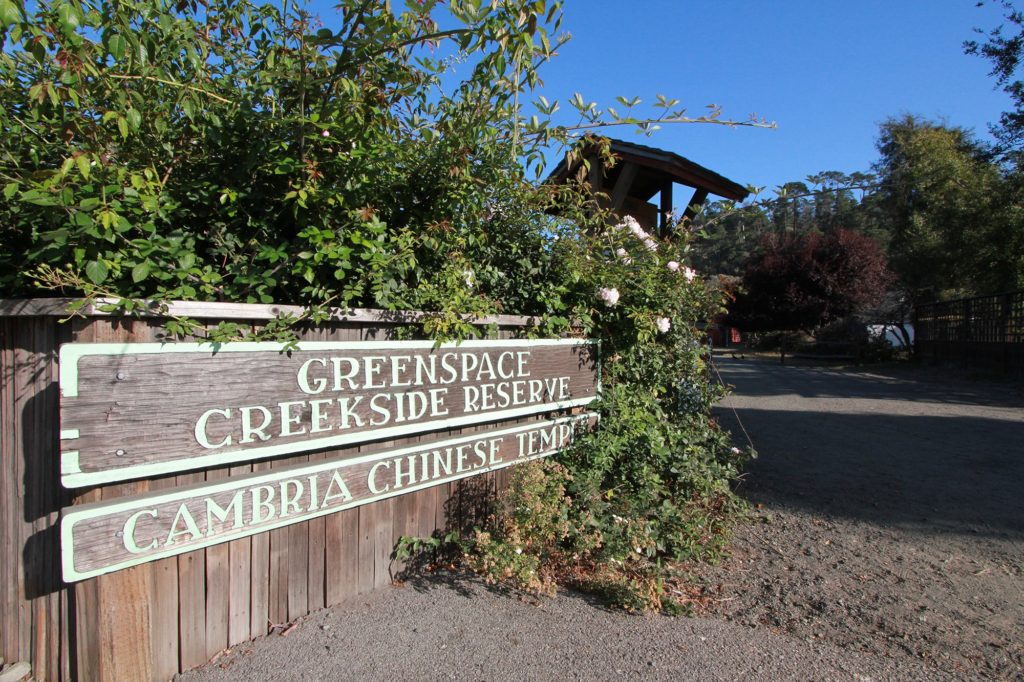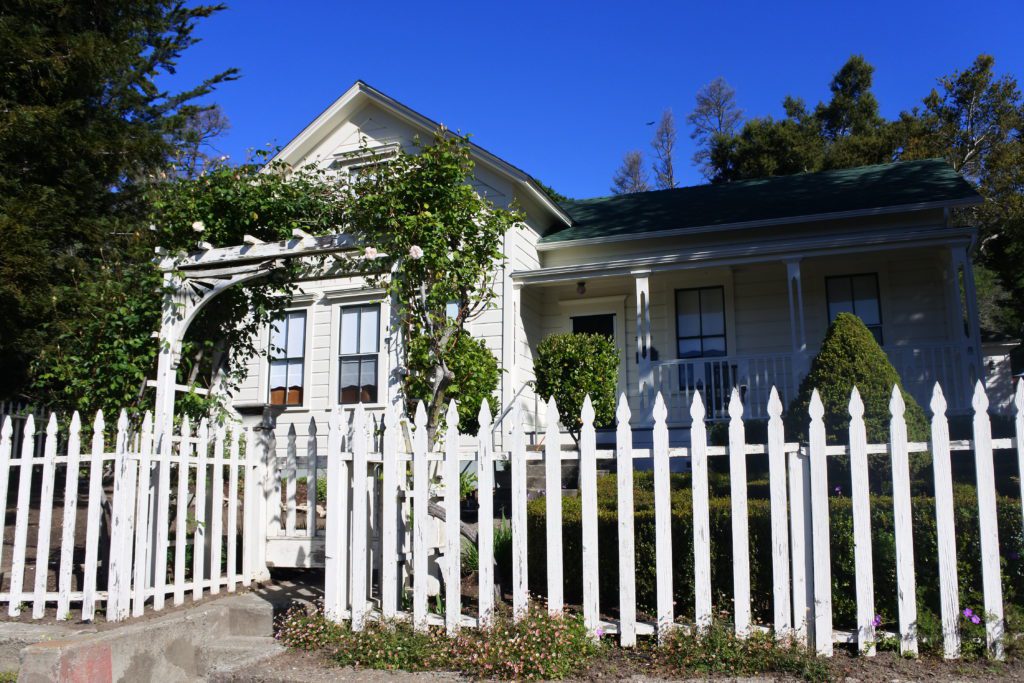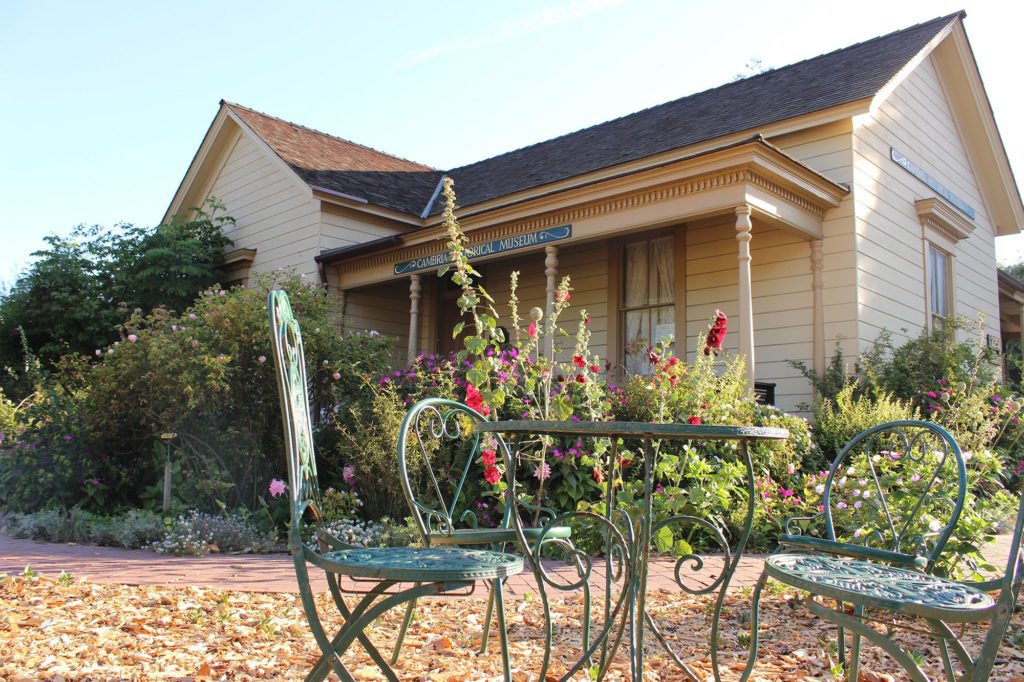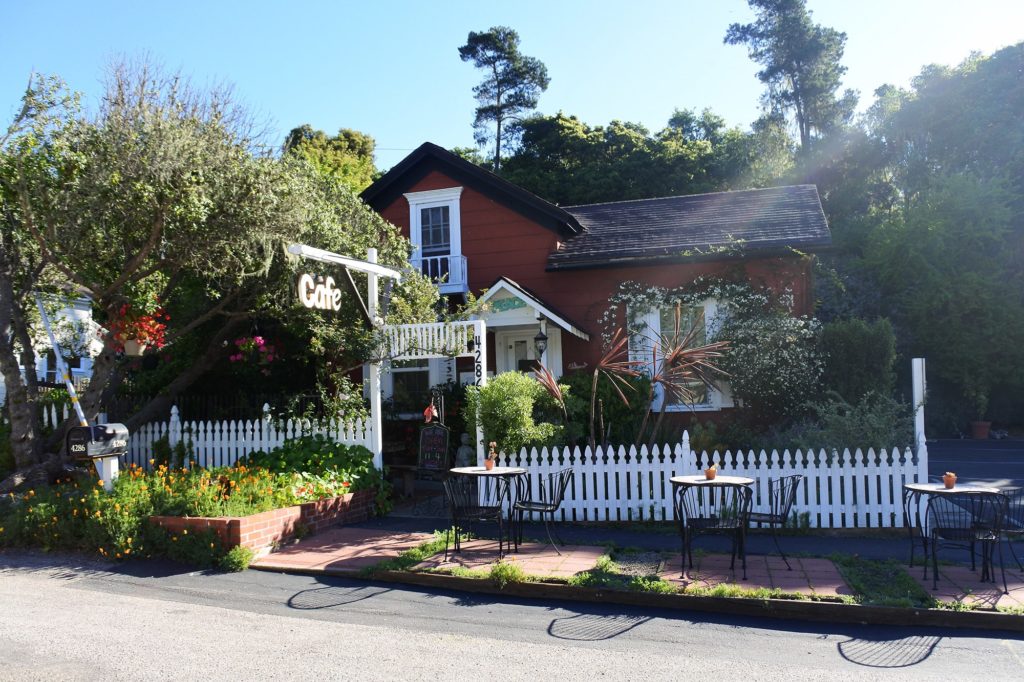Cambria’s rich history is rooted in the exciting story of the American West with tales full of Native Americans, cowboys, miners, merchants and pioneers. The earliest human settlement in this area was by Native American Chumash peoples, who lived off abundant marine resources in the coastal area.
Legend has it that early settlers were drawn to the area by its fertile lands, streams and lumber. The Oceanic Quicksilver Mining Company quickly claimed its stake, soon employing 300 people, creating the largest mine in the area and the sixth largest in the world. The town was originally called “Slabtown,” but it eventually adopted the more distinguished name of Cambria, according to local historians.
In 1958, Hearst Castle became a state park and was opened to the public. This brought throngs of tourists to the area clogging the roads until a Highway One bypass was built carrying the traffic around the downtown areas. Known over the years as Santa Rosa, Roseville, San Simeon and “Slabtown,” the town became Cambria (the Latin word for Wales, according to Funk & Wagnall’s) on January 10, 1870, on the recommendation of a local committee. The exact story of how Cambria got its name is shrouded in mystery and has been lost as subsequent generations have stepped forward to claim the honor of naming our town. One story that seems to have the most facts to support it is that Cambria is named after a Welsh town in Cambria County, Pennsylvania.


One of the oldest homes in Cambria, built in 1870, the Guthrie-Bianchini House still stands and is now the home of the Cambria Historical Museum. Share in Cambria’s heritage and visit the Historical Museum, Creekside Garden Preserve and Historic East Village, and revel in the notable local architecture.
Cambria Historical Museum
Built in 1870, the Guthrie-Bianchini House is one of Cambria’s oldest homes. Sitting on the corner of Burton Drive and Center Street in Cambria’s East Village, the house is now home to Cambria’s Historical Museum. It was restored by the Cambria Historical Society and opened in December 2008.
This exciting place of discovery has a rich history and has hosted over 20,000 visitors since it opened as a museum in December 2008. The museum holds regular exhibits and tours, and is a fun spot to visit during the Cambria Scarecrow/Harvest Festival every year.
The museum itself is a great place to host special events from meetings to family reunions and birthday parties. The restored Victorian home and spacious garden can accommodate many guests. For more information, e-mail info@cambriahistoricalsociety.com.
Historic East Village
Discover Cambria’s incredible history by taking a stroll around the Historic East Village. Filled with shops, restaurants, boutiques and art galleries, Cambria’s Historic East Village brings us back to a simpler time when life was easy and filled with wonder. With Victorian houses dating back to the 1870s and nature reserves, the East Village is perfect for visitors who want to slow down and stay awhile. For a more in-depth experience, enjoy the Historical Cambria Walking Tour, brought to you by the Cambria Historical Society.
Local Architecture


Cambria is brimming with historic architecture, from The Music House dating back to 1865 to Soto’s Market built in 1939. Tour historical Victorian houses and stop in at Mozzi’s, a historic saloon that harks back to the roaring ’20s.
Cambria has an eclectic and charming collection of many architectural styles embracing modern, Victorian, Old World, bungalow and cottage to name a few. Victorian architecture was very popular at the turn of the century, when Cambria was becoming a bustling town near one of the region’s largest mines. This style of architecture was the inspiration for many of the buildings still standing in Cambria today. Interpretations of the historic style are mixed with more modern influences for a quirky and welcoming atmosphere.
Nearby Hearst Castle is also a must-see architectural phenomenon, built between 1922 and 1939 in the “historic romantic” style by architect Julia Morgan. Cambria’s own Nitt Witt Ridge has an incredibly unique architectural style, built by novice folk artist and junk collector Arthur “Art” Harold Beal in the ’20s and beyond. As of June 2022, Nitt Witt Ridge is no longer open to the public.
Whatever your preference, Cambria’s local architecture is sure to inspire and awe.


